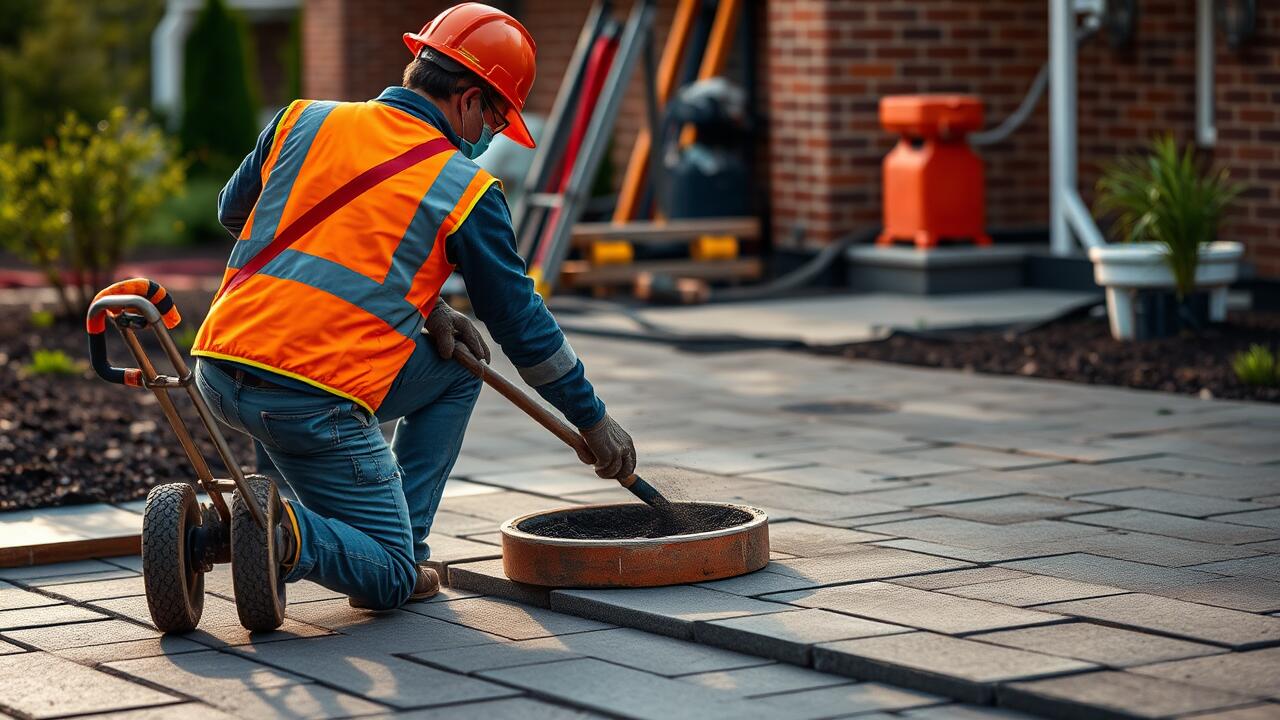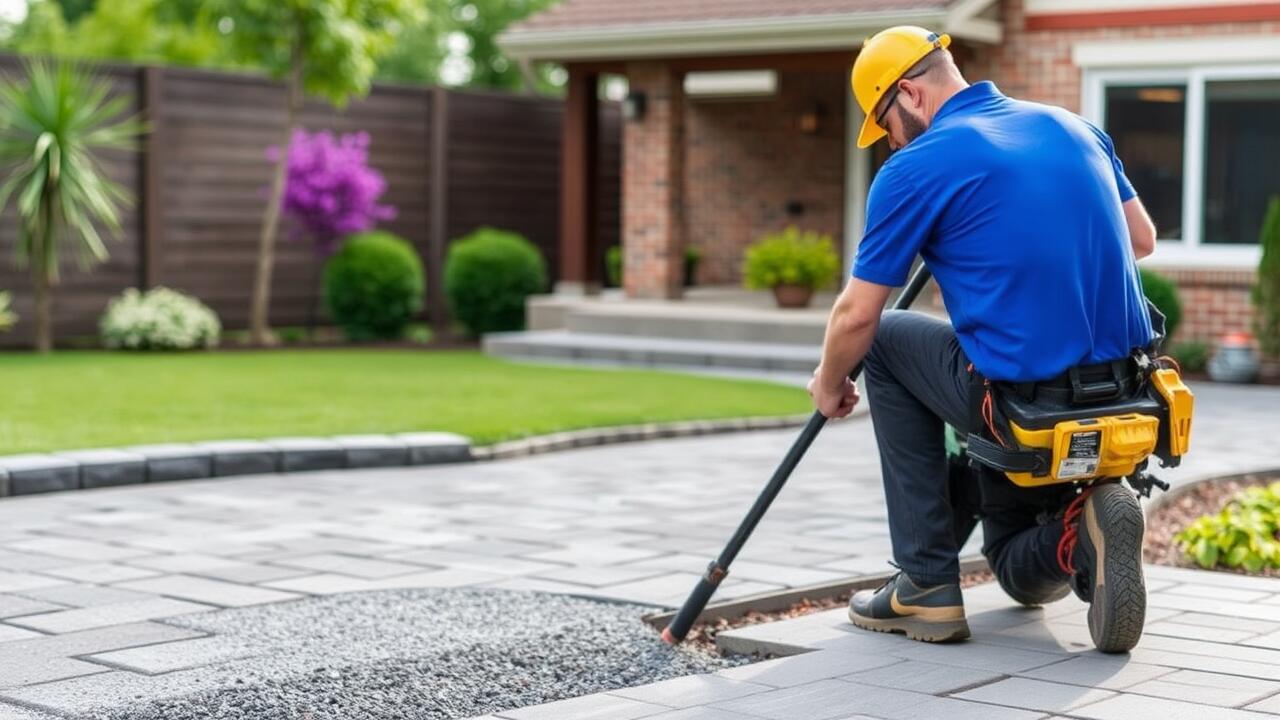
Environmental Impact of Concrete Paving
Concrete paving has a significant environmental impact that merits consideration. The production of cement, a primary ingredient in concrete, generates a considerable amount of carbon dioxide emissions. This process is energy-intensive, largely relying on fossil fuels, which contributes to climate change. Additionally, the extraction of raw materials for concrete can lead to habitat destruction and soil erosion, further threatening local ecosystems. However, advancements in technology have also resulted in greener alternatives, such as the use of recycled materials and supplementary cementitious materials, to reduce the environmental footprint of concrete paving.
In urban areas like Estrella, Phoenix, concrete paving is commonly utilized for sidewalks, driveways, and parking lots due to its durability and low maintenance requirements. The heat-absorbing properties of traditional concrete can exacerbate urban heat island effects, raising local temperatures. Some solutions, such as pervious concrete, allow water infiltration, mitigating runoff and promoting groundwater recharge. This approach can enhance the sustainability of concrete paving, balancing urban development needs with environmental health.
Sustainability Considerations
Sustainability is a crucial aspect of concrete paving, especially in urban areas like Concrete Paving Estrella, Phoenix. Concrete is highly durable, which contributes to a longer lifespan compared to other materials. This longevity means less frequent repairs and replacements, reducing the demand for resources over time. Additionally, modern concrete mixes can incorporate recycled materials and byproducts, further minimizing environmental impact and promoting resource efficiency.
Moreover, the thermal properties of concrete can aid in energy conservation. Light-colored concrete reflects sunlight, helping to mitigate the “urban heat island” effect prevalent in cities. This characteristic can lead to cooler environments and lowered energy costs associated with cooling buildings. By opting for concrete paving, communities can support sustainable urban development while maintaining practicality and functionality in their infrastructure choices.
Concrete Paving vs. Other Materials
Concrete paving offers several distinct advantages when compared to other materials such as asphalt and pavers. For one, concrete has a longer lifespan, often lasting over 30 years with proper maintenance. This longevity can lead to reduced replacement costs over time. Additionally, concrete’s reflective properties help mitigate the urban heat island effect, making it a more environmentally friendly choice in warmer climates. Areas like Concrete Paving Desert View, Phoenix, benefit from this feature as it helps maintain cooler surface temperatures during the sweltering summers.
On the other hand, asphalt is typically less expensive upfront. However, it requires more frequent maintenance and resurfacing, which can accumulate costs in the long run. Pavers provide aesthetic flexibility with various designs and colors but often come with a higher installation cost and can be more susceptible to shifting and weed growth. The choice between these materials ultimately depends on the specific requirements of a project, including budget, expected traffic loads, and desired durability.
A Comparison with Asphalt and Pavers
Concrete paving offers distinct advantages when compared to asphalt and traditional paving stones. Its durability results in longer-lasting surfaces that can withstand heavy traffic and withstand harsh weather conditions. Concrete is less prone to cracking than asphalt, which can soften in extreme heat and become prone to ruts. Additionally, maintenance for concrete paving tends to be less frequent and less intensive, making it a wise choice for both cost efficiency and longevity. Projects like Concrete Paving Desert View, Phoenix, highlight its resilience in hot climates.
In contrast, asphalt provides quicker installation and lower upfront costs, making it an attractive option for some projects. However, it typically requires more frequent repairs and resurfacing due to wear over time. Pavers, while aesthetically pleasing and suitable for certain applications, often require more labor for installation and can shift or settle unevenly. The choice between these materials will depend on specific project needs, budget considerations, and the desired appearance of the paved surface.
Common Uses of Concrete Paving
Concrete paving is widely utilized in various applications, ranging from residential driveways to expansive commercial parking lots. Its durability and strength make it an ideal choice for high-traffic areas. In urban settings, it can effectively withstand heavy loads and frequent vehicle movement, which is particularly beneficial for businesses relying on customer access. Concrete paving can also enhance the aesthetic appeal of a property when designed with decorative finishes and colors.
In areas like Desert View, Phoenix, concrete paving is especially advantageous due to the region's climate and landscape. It provides a stable surface that resists the challenges posed by harsh weather conditions. Homeowners often opt for concrete for patios, walkways, and pool decks, while businesses use it for loading docks and sidewalks. The versatility of concrete paving allows for a seamless integration with various architectural styles and landscaping designs.
Residential and Commercial Applications
Concrete paving is widely utilized in various residential and commercial applications due to its durability and aesthetic appeal. Homeowners often choose concrete driveways, patios, and walkways for their low maintenance and long-lasting characteristics. The versatility of concrete allows for different textures and colors, enabling homeowners to create a customized look that complements their property. In areas like Desert View, Phoenix, this type of paving can withstand the extreme heat while providing an elegant, functional surface that enhances outdoor spaces.
In commercial settings, concrete paving is favored for parking lots, sidewalks, and service areas. Its strength and ability to bear heavy loads make it ideal for business complexes and retail environments. Concrete surfaces contribute to a professional appearance and can be designed for high traffic volumes without significant wear or damage. Whether in bustling urban centers or quieter suburban developments, businesses in Desert View, Phoenix, find concrete paving an effective solution that meets both aesthetic and functional needs.
FAQS
What is concrete paving?
Concrete paving refers to the process of laying a concrete surface for various applications such as roads, driveways, parking lots, and walkways. It provides a durable and long-lasting surface that can withstand heavy loads and harsh weather conditions.
What are the environmental impacts of concrete paving?
Concrete paving can have both positive and negative environmental impacts. While it is a durable and low-maintenance option, the production of concrete can generate significant carbon emissions. However, advancements in sustainable practices, such as using recycled materials, can help mitigate these effects.
How does concrete paving compare to asphalt and pavers?
Concrete paving is generally more durable and longer-lasting than asphalt, which may require more frequent maintenance. Compared to pavers, concrete can be less expensive and easier to install but may offer less design flexibility. Each material has its own advantages and considerations depending on the specific project needs.
What are some common uses of concrete paving?
Concrete paving is commonly used for a variety of applications, including residential driveways, commercial parking lots, sidewalks, and roadways. It is also used in industrial settings for loading docks and warehouse floors.
Are there sustainability considerations with concrete paving?
Yes, sustainability considerations for concrete paving include the use of eco-friendly materials, minimizing energy consumption during production, and incorporating recycled aggregates. Additionally, proper design can enhance stormwater management and reduce urban heat effects.


